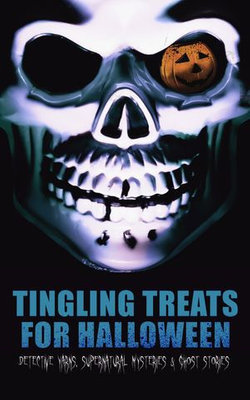This unique horror collection is meticulously edited & formatted to the highest digital standards and adjusted for readability on all devices. Contents: Suspense Stories: The Box with the Iron Clamps (Florence Marryat) The Birth Mark (Nathaniel Hawthorne) The Oblong Box (Edgar Allan Poe) A Terribly Strange Bed (Wilkie Collins) The Torture by Hope (Villiers de l'Isle Adam) The Great Valdez Sapphire (Anonymous) The Mysterious Card (Cleveland Moffett) My Fascinating Friend (William Archer) The Lost Room (Fitz-James O'Brien)Detective Stories: A Scandal in Bohemia (A. Conan Doyle) The Safety Match (Anton Chekhov) The Black Hand (Arthur B. Reeve) The Purloined Letter (Edgar Allan Poe) The Rope of Fear (Thomas W. Hanshew and Mary E. Hanshew) The Biter Bit (Wilkie Collins) Missing: Page Thirteen (Anna Katherine Green) Some Scotland Yard Cases (Sir Robert Anderson) Ghost Stories: The Horla (Guy de Maupassant) Number 13 (Montague Rhodes James) Thrawn Janet (Robert Louis Stevenson) The Man Who Went Too Far (E.F. Benson) To Sura: A Letter (Pliny the Younger) The Beast with Five Fingers (William F. Harvey) Joseph: A Story (Katherine Rickford) Sister Maddelena (Ralph Adams Cram) The Phantom Rickshaw (Rudyard Kipling) The Apparition of Mrs. Veal (Daniel Defoe) Canon Alberic's Scrap-Book (M. R. James) The Haunted and the Haunters (Lord Edward Bulwer-Lytton) The Silent Woman (Leopold Kompert) The Rival Ghosts (Brander Matthews) The Damned Thing (Ambrose Bierce) The Interval (Vincent O'Sullivan) Dey Ain't No Ghosts (Ellis Parker Butler) The Banshees of Ireland Some Real American Ghosts The Deserted House (E. T. A. Hoffmann) The Withered Arm (Thomas Hardy) The House and the Brain (Lord Edward Bulwer-Lytton) The Roll-Call of the Reef (A. T. Quiller-Couch) The Open Door (Mrs. Margaret Oliphant) The Mysterious Sketch (Erckmann-Chatrian) Green Branches (Fiona Macleod) The Were-Wolf (H. B. Marryatt) Clarimonde (Théophile Gautier) The Stalls of Barchester Cathedral (M. R. James) Paranormal Psychic Stories Humorous Mystery Stories…



Share This eBook: